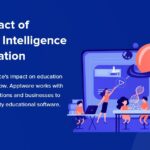Artificial Intelligence (AI) continues to push the boundaries of what was once deemed impossible, revolutionizing industries, transforming economies, and reshaping the very fabric of society. Yet, in the dynamic landscape of AI development, identifying and measuring progress can be a daunting task. How do we quantify the advancements that propel AI from fiction to reality? In this article, we explore the methodologies and metrics used to track developments in AI, making the impossible possible.
At its core, AI development encompasses the creation and refinement of algorithms, models, and systems capable of emulating human intelligence and performing tasks that traditionally require human cognitive abilities. From machine learning to natural language processing, AI development spans a spectrum of techniques and applications, each contributing to the evolution of intelligent systems.

In quantifying developments in AI, several key metrics come into play, providing insights into the capabilities and performance of AI systems. These metrics include:
Measures of how well AI systems perform specific tasks, such as image recognition or language translation, compared to human benchmarks.
Metrics that assess the computational efficiency and processing speed of AI algorithms, crucial for real-time applications and scalability.
Evaluations of AI systems’ ability to perform reliably across diverse datasets and real-world scenarios, indicative of their robustness and generalization capabilities.
Metrics that gauge the ethical implications and fairness of AI algorithms, ensuring that they do not perpetuate biases or harm vulnerable populations.
Technological advancements play a pivotal role in driving progress in AI development, unlocking new frontiers of possibility and pushing the boundaries of what AI can achieve. Breakthroughs in areas such as deep learning, reinforcement learning, and neural network architectures fuel innovation, enabling AI systems to tackle increasingly complex tasks with unprecedented accuracy and efficiency.
The impact of AI development extends across diverse industries, revolutionizing sectors ranging from healthcare and finance to transportation and entertainment. In healthcare, AI-powered diagnostics and personalized treatment recommendations enhance patient care and improve outcomes. In finance, predictive analytics and algorithmic trading strategies optimize investment decisions and mitigate risks. In transportation, autonomous vehicles and smart traffic management systems revolutionize mobility and urban planning.
Here some challenges and opportunities: Despite the remarkable progress in AI development, challenges persist, ranging from ethical concerns and algorithmic biases to regulatory hurdles and data privacy issues. However, amidst these challenges lie opportunities for innovation, collaboration, and responsible stewardship of AI technologies. Initiatives such as interdisciplinary research collaborations, industry standards development, and public-private partnerships pave the way for addressing these challenges and harnessing the transformative potential of AI for the greater good.
In the last, identifying and measuring developments in artificial intelligence is a multifaceted endeavor that requires a nuanced understanding of technological advancements, key metrics, and societal implications. By leveraging methodologies such as accuracy, efficiency, and fairness metrics, we can track the progress of AI development and unlock new possibilities for innovation and impact. As AI continues to push the boundaries of what is possible, it is imperative that we approach its development with foresight, responsibility, and a commitment to realizing its full potential for the benefit of humanity.
5 Major Impact of Artificial Intelligence on the Public Sector





